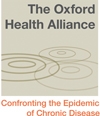Honing hospital prescribing
Prescribing errors made by interns may reflect a hospital culture that views medication charting as a routine chore and does not offer junior doctors enough supervision, rather than a simple lack of knowledge. Coombes et al came to these conclusions when they interviewed interns from a teaching hospital in Queensland who had made a range of errors, including charting incorrect doses, omitting prescribed therapies and overlooking prior adverse drug reactions (→ Why do interns make prescribing errors? A qualitative study).
Poorly organised or confusing medication charts were another factor that has also been raised before. A national inpatient medication chart (NIMC), aimed at standardising hospital medication orders, has been developed and introduced to varying degrees over the past few years. In “The national inpatient medication chart: critical audit of design and performance at a tertiary hospital”, Millar et al present their audit of implementation of the NIMC in 14 hospitals across Australia, together with a comparison of the NIMC’s design with that of the chart previously used at Royal Perth Hospital. Overall average compliance with the requirements of the NIMC’s chart fields was less than 60%, and the study reveals some important deficiencies in the new chart, bringing into question its superiority to the previous model.
According to the Oxford ...
 You may have noticed some contributions from the Oxford Health Alliance in our recent special December issue. The Alliance seeks to involve as many stakeholders as possible in discussions about chronic disease and public health — hence the brief perspective on the health-promoting role of government, and the note from corporate food giant, PepsiCo, outlining its efforts to improve its health profile. In the next article in the series, Magnusson and Colagiuri consider how the law might be used to keep us healthy (→ The law and chronic disease prevention: possibilities and politics).
You may have noticed some contributions from the Oxford Health Alliance in our recent special December issue. The Alliance seeks to involve as many stakeholders as possible in discussions about chronic disease and public health — hence the brief perspective on the health-promoting role of government, and the note from corporate food giant, PepsiCo, outlining its efforts to improve its health profile. In the next article in the series, Magnusson and Colagiuri consider how the law might be used to keep us healthy (→ The law and chronic disease prevention: possibilities and politics).
Midwife-led maternity care a winner
Rural obstetric units run entirely by midwives under the supervision of a tertiary referral centre are a viable model of maternity care, say Scherman et al after describing the first year of operation of the midwife-led maternity unit at Mareeba, 64 km south-west of Cairns (→ The first year of a midwifery-led model of care in Far North Queensland). Among those presenting for pregnancy care, 170 women initially categorised as low risk received antenatal care at Mareeba, with 24-hour cover by 12 midwives, and regular case-conferencing with an obstetrician in Cairns to identify women whose care should be transferred to the larger centre. Mareeba GPs were also on hand to perform elective and emergency caesareans. There were 158 deliveries at Mareeba, with six women requiring intrapartum transfer, and two requiring postpartum transfer to Cairns Base Hospital. Neonatal resuscitation rates were low compared with state averages. According to Pesce, about 130 rural maternity units have closed in Australia since 1995 (→ Rural maternity units: how will they have a future?). The experience at Mareeba illustrates the need for a flexible approach to allow optimal use of local workforce and resources, and models that include expeditious transfer when it is desired or required.
Milk allergy guidelines
About 2% of children aged less than 2 years have cows milk protein allergy. Three types of formula (soy, extensively hydrolysed and amino acid) are appropriate for use in these infants, depending on the specific allergy syndrome they are experiencing. In “Guidelines for the use of infant formulas to treat cows milk protein allergy: an Australian consensus panel opinion”, Kemp et al provide an Australian consensus panel opinion, outlining when to use which formula.
Moving forward with chlamydia screening
Australia needs an innovative chlamydia control program that engages with primary care, includes education and health promotion, and is tested and refined via randomised controlled trials. According to Hocking et al, chlamydia screening programs overseas have had little long-term impact on prevalence, despite high screening rates, and we need to make a concerted effort to do better (→ Chlamydia screening — Australia should strive to achieve what others have not). The authors will be heartened by the results of a randomised controlled trial from the Australian Capital Territory, reported by Bowden et al, which found that asking GPs to screen for chlamydia when performing a Pap smear significantly increased screening rates (→ Screening for Chlamydia trachomatis at the time of routine Pap smear in general practice: a cluster randomised controlled trial).
Flight relief with compression tights
Wearing graduated-compression tights during a long air flight can reduce ankle oedema and travel-related symptoms, such as perceived swelling, leg pain, reduced energy and concentration, and sleep disturbance. So say Hagan and Lambert, who were commissioned by Skins Compression Garments to perform an open-label randomised crossover trial assessing the ability of the company’s full-length graduated-compression tights to alleviate flight-related symptoms (→ A randomised crossover study of low-ankle-pressure graduated-compression tights in reducing flight-induced ankle oedema). Among 23 pilots and 44 passengers, self-measured increases in ankle circumference and self-reported associated symptoms were reduced when the tights were worn during flights, compared with when they were not worn. The effect of the product on deep vein thrombosis incidence is not known.
Another time . . . another place
Michael E DeBakey, 1991




